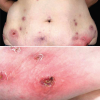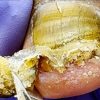Acne is caused by a combination of factors, including:
Excess Sebum (Oil) Production – The sebaceous glands in the skin produce too much oil, which can clog pores.
Clogged Hair Follicles – Dead skin cells and excess oil can block hair follicles, creating an environment where bacteria can thrive.
Bacteria (Propionibacterium acnes) – This bacteria naturally lives on the skin but can multiply in clogged pores, leading to inflammation and acne breakouts.
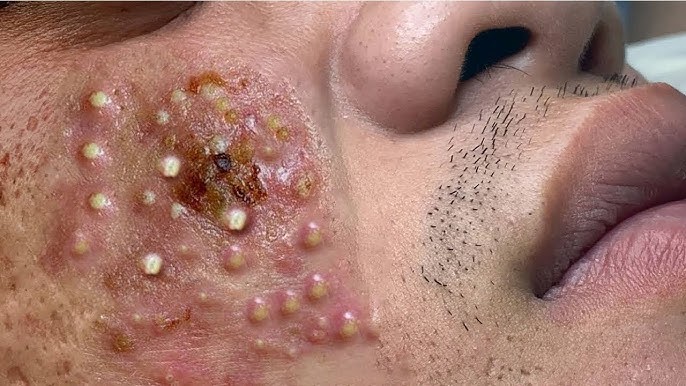
Hormonal Changes – Fluctuations in hormones, such as during puberty, menstruation, pregnancy, or stress, can increase oil production and trigger acne.
Diet – Some studies suggest that high-glycemic foods (like sugary snacks and dairy) may contribute to acne in some individuals.
Stress – Stress doesn’t directly cause acne but can make it worse by increasing hormone levels that stimulate oil production.
Genetics – If your parents had acne, you’re more likely to develop it as well.
Certain Medications – Some drugs, like corticosteroids, androgens, or lithium, can contribute to acne.
Skincare & Makeup Products – Using products that clog pores (comedogenic) can contribute to breakouts.
1. Excess Sebum (Oil) Production
The skin contains sebaceous glands, which produce an oily substance called sebum.
Sebum helps keep the skin hydrated, but when it’s overproduced, it can mix with dead skin cells and clog pores.
Hormonal fluctuations (like during puberty or stress) can cause sebaceous glands to become overactive.
2. Clogged Hair Follicles (Pores)
The skin naturally sheds dead cells, but if they don’t shed properly, they can accumulate inside hair follicles.
When excess sebum mixes with these dead skin cells, it creates a plug that blocks the follicle.
This blockage is called a comedone:
Open comedones (blackheads) – The pore is partially open, and the buildup oxidizes, turning black.
Closed comedones (whiteheads) – The pore is fully blocked, trapping bacteria and oil inside.
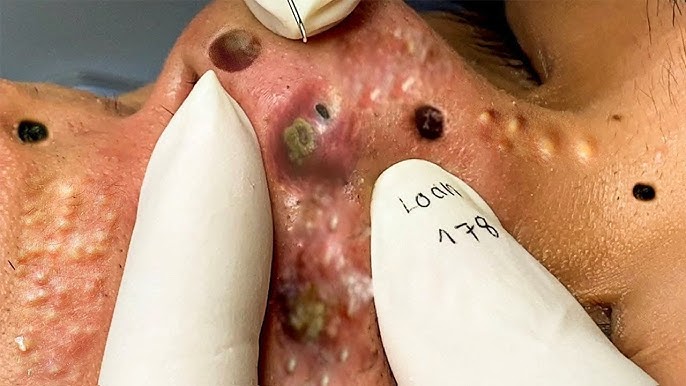
3. Bacteria Overgrowth (Propionibacterium acnes)
Propionibacterium acnes (P. acnes) is a naturally occurring bacteria on the skin.
When pores are clogged, P. acnes thrives in the oxygen-poor environment, leading to inflammation.
The immune system reacts to the bacteria, causing red, swollen pimples, pustules, or cysts.
4. Hormonal Changes (Androgens & Acne)
Androgens (male hormones like testosterone) increase during puberty in both boys and girls.
These hormones enlarge the sebaceous glands, leading to excess oil production.
Hormonal acne also occurs during:
Menstruation & pregnancy – Due to hormonal shifts.
Polycystic ovary syndrome (PCOS) – A condition causing hormone imbalances.
Stress – Causes the body to produce more cortisol, which can indirectly increase androgens and sebum production.
5. Diet & Acne
While diet doesn’t directly cause acne, some foods may contribute to breakouts:
High-Glycemic Index Foods (Sugary & Processed Foods)
These foods cause spikes in blood sugar and insulin, leading to increased sebum production and inflammation.
Common examples:
White bread, pasta, and rice
Candy and soda
Pastries and cakes
Dairy Products
Some studies suggest that milk and dairy (especially skim milk) may trigger acne.
Dairy can contain hormones that increase oil production.
Fatty & Processed Foods
Fast food and fried foods may increase inflammation and oil production
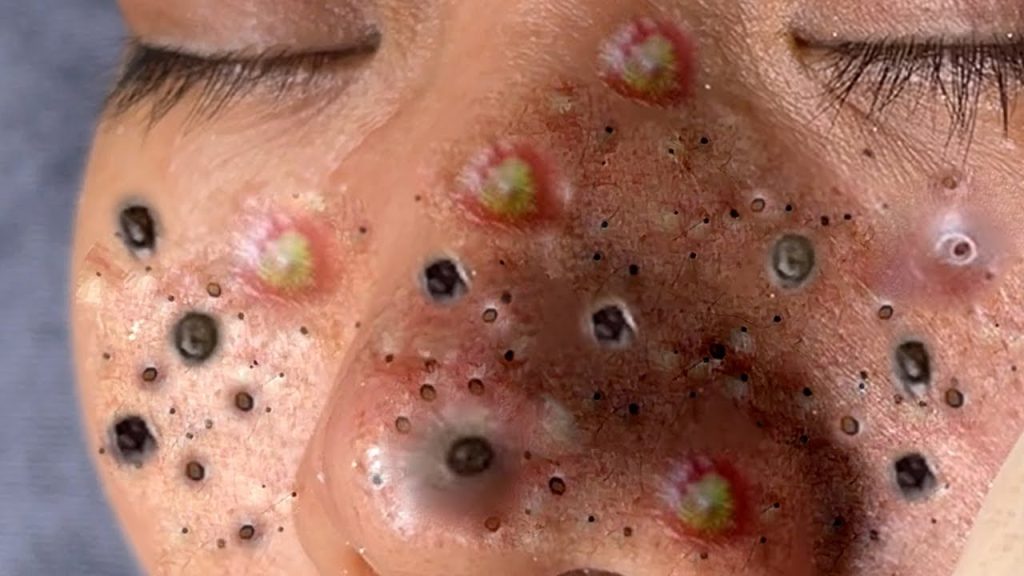
6. Stress & Acne
Stress doesn’t directly cause acne, but it makes existing acne worse.
When you’re stressed, your body produces more cortisol (a stress hormone), which stimulates oil glands.
Stress also slows wound healing, making acne take longer to clear.
7. Genetics & Acne
Acne can run in families.
If one or both parents had acne, their children are more likely to develop it.
Genetic factors influence skin type, oil production, and inflammatory responses.
Effective acne treatment depends on the severity and type of acne. Here are some of the best methods:
Mild Acne (Whiteheads & Blackheads)
Gentle Cleansing – Wash your face twice a day with a mild cleanser (e.g., Cetaphil, La Roche-Posay).
Salicylic Acid – Helps unclog pores and reduce inflammation.
Benzoyl Peroxide – Kills acne-causing bacteria and reduces oil.
Non-Comedogenic Moisturizers – Keeps skin hydrated without clogging pores.
Moderate Acne (Pimples & Pustules)
Retinoids (e.g., Adapalene, Tretinoin) – Increases skin cell turnover to prevent clogged pores.
Antibiotics (Topical or Oral, e.g., Clindamycin, Doxycycline) – Reduces bacteria and inflammation.
Azelaic Acid – Reduces redness and kills bacteria.
Oil-Free Sunscreen – Protects skin from irritation caused by treatments.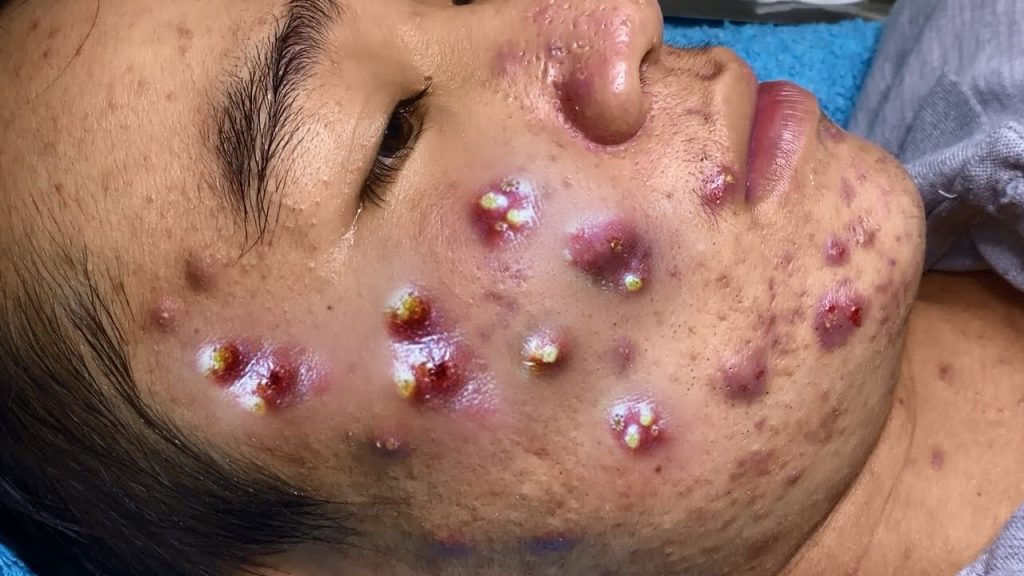 Severe Acne (Cystic & Nodular)
Severe Acne (Cystic & Nodular)
Oral Antibiotics – Controls bacteria and inflammation.
Hormonal Therapy (For Women, e.g., Birth Control, Spironolactone) – Balances hormones that trigger breakouts.
Isotretinoin (Accutane) – A powerful prescription for severe cases.
Cortisone Injections – Reduces large cystic breakouts quickly.
Lifestyle Tips
- Diet – Reduce dairy, sugar, and high-glycemic foods.
- Hydration – Drink plenty of water.
- Hands Off – Avoid picking or popping pimples.
- Change Pillowcases & Towels Regularly – Prevents bacteria buildup.
Enjoy videos full detail :

